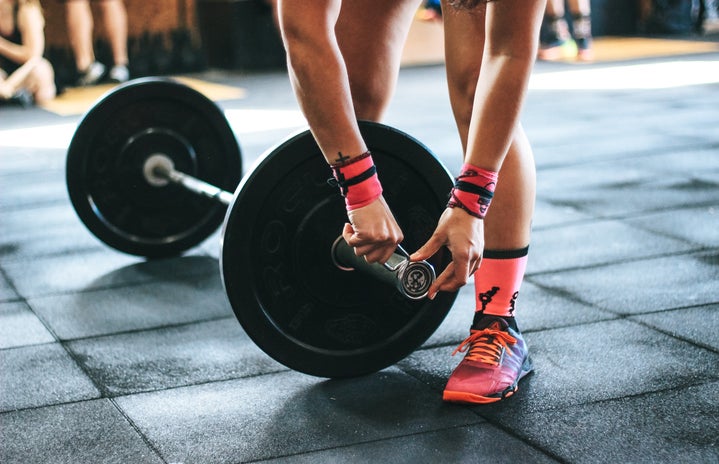Today’s the day: you walk into the McMaster Sports Hall wearing the cutest workout set you could find in your wardrobe and swinging your ponytail you spent too much time perfecting. As you step into the gym, you glance around at your surroundings. To your right are overly perspiring men, grunting every rep on the squat rack. Avoiding that area, you make your way towards the one available bench by the dumbbell racks until you realize you’re the only woman there. A lump of regret begins to muster in your belly as you calculate your next steps to the exit. “Next time” you whisper to yourself.
This story isn’t just mine, and neither is it just yours. A Canadian survey found that, in comparison to the 28% of men who find gym environments intimidating and uncomfortable, a jarring 50% of women feel this way. To reiterate, that’s half of all women who work out.
The gender gap at the gym is no secret. It’s well known that men dominate weightlifting areas and women congregate near cardio machines. These ‘high testosterone’ areas can make the weight room feel like a forbidden zone for some women. What this creates is an extremely unwelcoming environment. Women’s experiences at the gym are often characterized by psychological discomfort, unsolicited advice by male peers, heightened concern about social evaluation, and avoidance of certain activities. Considering that 71% of women have been sexually harassed at the gym, it comes to no surprise that the presence and behaviours of men discourage women from utilizing weightlifting equipment. To make matters worse, these forbidden areas always seem to be located at dead center of the gym, where big weightlifting machines are inconveniently placed. Treadmills and Stairmaster machines end up dispersing to the corners and walls of the gym. This produces a very visible gender divide, where both men and women seem to mark their territories.
What are the implications? Since university is known to be the perfect time to get into the habit of regular physical exercise, the unwelcoming environment of public spaces such as gyms perpetuate systemic inequalities, affecting the lifelong health of marginalized communities. Do you see how it’s more than just intimidation? It’s costing women’s health.
Now you might be thinking: what about the women’s-only area? Hasn’t the problem already been solved? The women’s-only area is wonderful for religious and cultural reasons, however it’s a band-aid solution to a deep-rooted issue. In fact, creating a women’s-only area further establishes the main gym as a ‘man’s’ space. Solving the issue by designating a smaller enclosed space for women fails to address the bigger issue at hand; the environment should be welcoming enough to not have to create a separate space for women in the first place.
Gyms are a place of vulnerability, empowerment, and escape. Weightlifting in particular has shown to have incredible health benefits. For marginalized folks specifically, weightlifting can be extremely empowering, both mentally and physically. When you lift, you are literally taking up more space.
Making gyms a more inclusive space requires conscious effort from everyone, to redefine the gender relations that govern the use of gym space. At the end of the day, everyone is working towards a shared goal of being a better version of themselves. Let’s actively and consciously make the shared space at the gym, truly shared.

